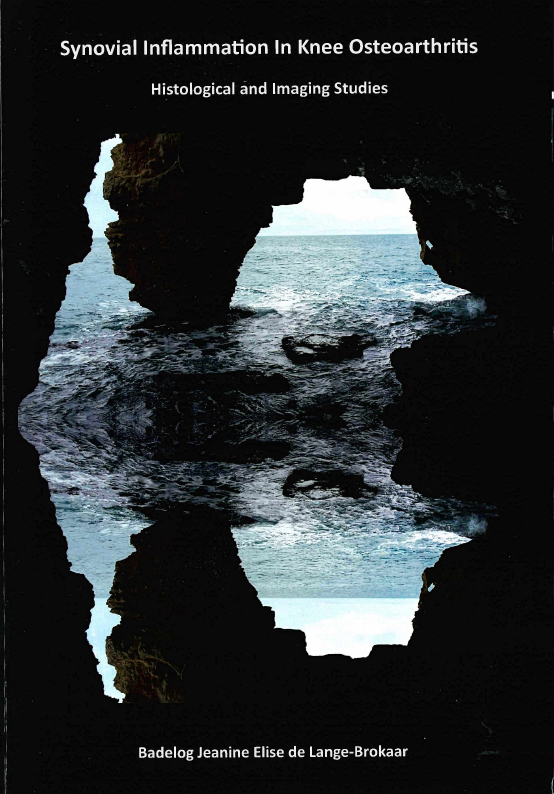geMstoan
Synovial inflammation in knee osteoarthritis: histological and imaging studies
B. de Lange-Brokaar, thesis defence date October 2015
For a long time, osteoarthritis (OA) was considered a degenerative condition. Recently, however, it became evident that synovial inflammation is prevalent in OA and that it is an important predictor of cartilage destruction and pain. Yet, the role of synovitis in knee OA is still largely unknown.
…Synovial inflammation in knee osteoarthritis: histological and imaging studies
B. de Lange-Brokaar, thesis defence date October 2015
For a long time, osteoarthritis (OA) was considered a degenerative condition. Recently, however, it became evident that synovial inflammation is prevalent in OA and that it is an important predictor of cartilage destruction and pain. Yet, the role of synovitis in knee OA is still largely unknown.
From previous studies we know that synovitis in OA is histologically similar to the one observed in rheumatoid arthritis (RA), although RA synovial tissues display more severe inflammation. To further characterise synovial inflammation in knee OA, we performed laboratory research to define which cell types are most commonly seen in the synovium of patients with knee OA. This revealed that macrophages and T-cells, followed by mast cells, were the most prominent immune cells, and that subpopulations of both T-cells and macrophages were in an activated state. Furthermore, we found that a particular subset of T-cells (i.e., CD4+ T-cells) were associated with pain, offering a cellular basis for the long-known association between synovitis and pain in knee OA. In a subsequent study we showed that synovial tissue of OA patients displayed another range of immune cells than synovial tissue of RA patients (i.e., a significantly higher number of mast cells, but no B-cells). We also found an association between the number of mast cells and structural damage in patients with knee OA.
The objective of the second part of this thesis was to study the relation between synovitis and clinical manifestations in knee OA. Synovitis was assessed on MR images of the knee joint of patients with knee OA. On these images we observed three distinct patterns of synovitis. Furthermore, we showed that synovitis might play a role in pain and structural damage on the longer term. Follow-up with MR imaging was performed in a subset of patients, which allowed us to demonstrate that changes in mean total synovitis scores were not statistically significant on group level although the synovitis score changed during the disease course in individual patients. Increase of synovitis over time was associated with cartilage deterioration, although it was not related with change in pain. Cartilage deterioration in itself was, however, associated with change in pain, suggesting that cartilage deterioration might serve as a mediator in the association between synovitis and pain.
